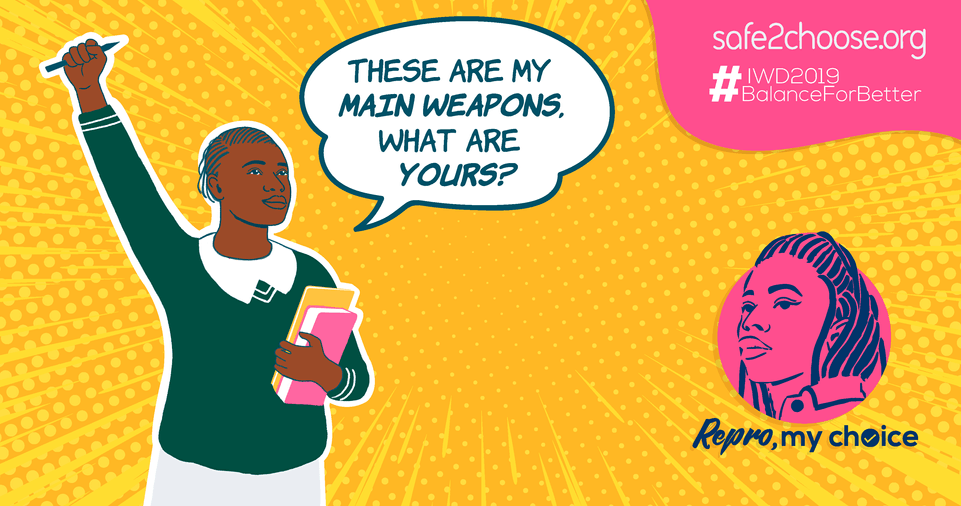By Pauline Diaz
Around the world, pregnant girls are banned from schools
In June 2017, president John Magufuli of Tanzania created a blast wave in the international development sphere by saying: “As long as I am president … no pregnant student will be allowed to return to school … After getting pregnant, you are done.” His main reason was that it would distract the class and influence other girls to do the same. However shocking of a statement, he was merely reinforcing an existing archaic law dating from the 1960s which allows schools to ban pregnant girls. According to a report by the Center of Reproductive Rights, more than 55,000 girls have been expelled from school since then, feeding the never-ending circle of poverty. But Tanzania is not the only country that presents obstacles young pregnant girls, Sierra Leone’s minister of education also decided in 2015 to ban “visibly pregnant” girls from school; Burundi even banned teen fathers along with the pregnant girls in June 2018; and there are countless of other unregistered similar events around the world.
Obviously, this has a tendency to happen more in restrictive contexts where access to sexual education, contraception, and abortion is limited. But we shouldn’t punish young people by depriving them from their education because they got pregnant; instead, we should all be providing them with the right information and services to make safe choices. It is well-researched that the abstinence-only form of sexual education is an ineffective solution, and we should all see and accept the truth: young people have sex, young people will get pregnant—willingly or accidentally—and young people will need to have access to safe options.
Talking about abortion at school
We all know that information is power, but abortion is so stigmatized that people are often trying to avoid bringing it up, hoping it will cease to happen if nobody says the word. However, abortion has been happening since the beginning of time, and is one of the most common medical procedures still to this day – 1 in 3 women will have an abortion throughout their lifetime. We need to give our kids all the tools they need to navigate their sexual world safely. School is where students start shaping their own identity and opinion on many subjects – often different from their parents’ grip – and the education system owes them scientific and non-judgmental information along with a safe space to engage these questions.
It can be difficulty for adults to approach the subject without bias, so many organizations have created very interesting material to help trainers. International Planned Parenthood Federation for example created the following guide, which safe2choose and HowToUse regularly use in its trainings, even with providers and medical students.
When abortion is not even taught at medical schools
Unfortunately, it is complicated to expect regular schools to tackle the subject of abortion with young people if medical schools themselves avoid teaching it to future medical providers. Indeed, in many medical schools, abortion stigma is so high, that learning about it is only optional — even though abortion is a often a life-saving procedure . So how do we address this issue? After realizing that many countries didn’t offer mandatory abortion courses at medical school, our dear friend HowToUseAbortionPill decided to mitigate this information gap and created its own open source online lesson. The 6-video course enables medical students and pharmacists to learn quickly and simply about how to manage medical abortion with pills, and in 2018, the classes received 2967 views —proving the necessity of spreading this information. safe2choose and HowToUse often partner on the ground to deliver trainings to providers while introducing the online tool.
Sharing resources
Because it is surrounded by stigma and dangerous myths, sexual education in general is not an easy subject to teach objectively — let alone abortion. Educators often have to first deconstruct their deeply-rooted biases and stay up-to-date with scientific and social research. In addition, abortion is often too sensitive to be approached upfront and trainers have to be creative to find other ways to talk about it— usually by building empathy.
Sharing resources and ideas can be a great solution to improve access to abortion information. What kind of advice would you give and how would you teach about it? We would love to hear from your experience in your country and ideas on how to talk about abortion in schools particularly. Share your story, your links, your organisation, etc. with us. Visit: https://safe2choose.org/abortion-stories/
We want to hear about you. Let’s join together during this International Women’s Month and de-stigmatize abortion so women around the world can decide over their bodies. #ReproMyChoice
Resources:
https://www.theguardian.com/global-development/2017/jun/30/tanzania-president-ban-pregnant-girls-from-school-john-magufuli
https://www.npr.org/sections/goatsandsoda/2015/04/06/397272538/visibly-pregnant-girls-are-banned-from-school-in-sierra-leone
https://www.globalcitizen.org/en/content/burundi-pregnant-adolescent-girls-school-ban/
https://www.washingtonpost.com/news/posteverything/wp/2017/08/21/abstinence-only-education-doesnt-work-were-still-funding-it/?noredirect=on&utm_term=.02ceede1a7ec
http://www.1in3campaign.org/
www.statnews.com/2018/11/06/medical-schools-failing-teaching-doctors-discuss-abortion
